Visiting Kuala Lumpur’s Fabulous Textile (and Jewellery) Museum
Malaysia’s National Textile Museum (Muzium Tekstil Negara), located in a British colonial era-building in the oldest part of Kuala Lumpur, is something of a misnomer. It has a splendid collection of textiles from the various ethnic groups of Malaysia but it also houses some of the nation’s most important examples of antique gold and silver jewellery.
It is for this reason that it is a pity that the Museum is not named the Textile and Jewellery Museum because that is what it is. Many visitors do not understand what the museum holds with its current abbreviated and misleading name and accordingly fail to visit what is, arguably, the best museum in Kuala Lumpur.
Not only does the museum have superb holdings but they are well lit, displayed and conserved over two spacious floors. Indeed, it is a contrast to the National Museum or Muzium Negara which does Malaysia little credit and is nowhere near as professionally run and laid out as a national museum should be. The Thais have worked this out and have been committing significant funds and expertise to overhauling the National Museum in Bangkok to make is a world class museum when just a few years ago, the best description for the museum probably was ‘sad’.
Many visitors do visit Muzium Negara in Kuala Lumpur but fail to visit the Textile Museum undoubtedly because of its misleading name. Muzium Negara has some worthy items but there is also much on display for purposes of nationalism and also, items that are no longer on display for political and ethnic reasons. But when it comes to world-class treasures, it is to the Textile Museum that visitors should head.
The Museum, which opened in 2010, is housed in what was the the headquarters for the Federated Malay States Railways, originally completed in 1905 and designed by the colonial British architect Arthur Benison Hubback in a neo-Mughal or Indo-Saracenic Revival style.
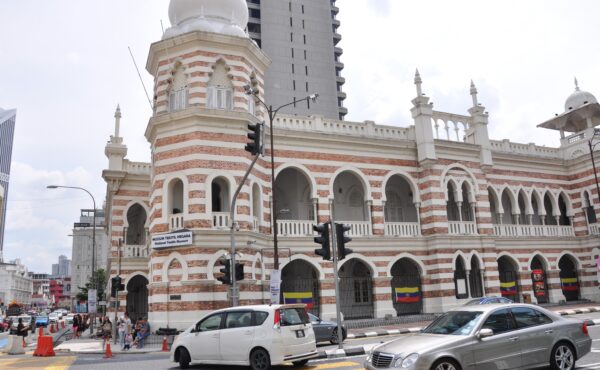
One of the great treasures of the Textile Museum is this solid gold betel or tobacco box which probably dates to the 19th century and was formerly owned by the Sultan of Terengganu. This box has been awarded National Heritage status by the Malaysian government and probably is the single most exquisite example of surviving Malay goldwork. It is chased, pierced, decorated with gold filigree and set with diamonds and other precious stones.
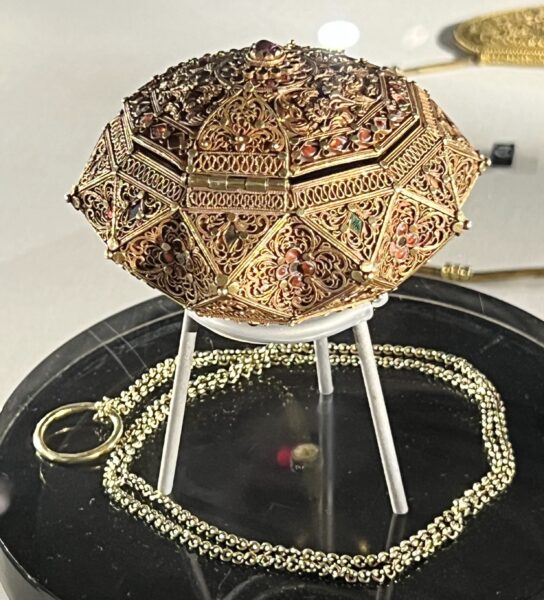
Other examples of goldwork on display are shown below. These are a small example of what is to be seen in the Museum.
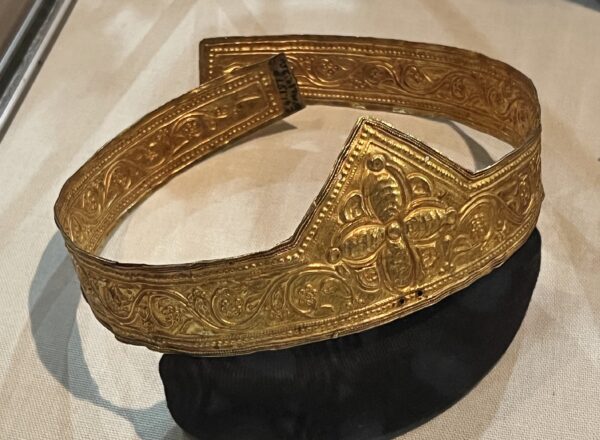
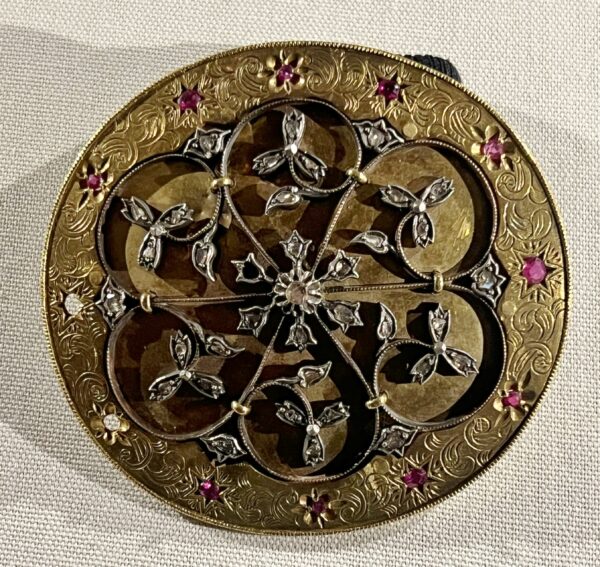
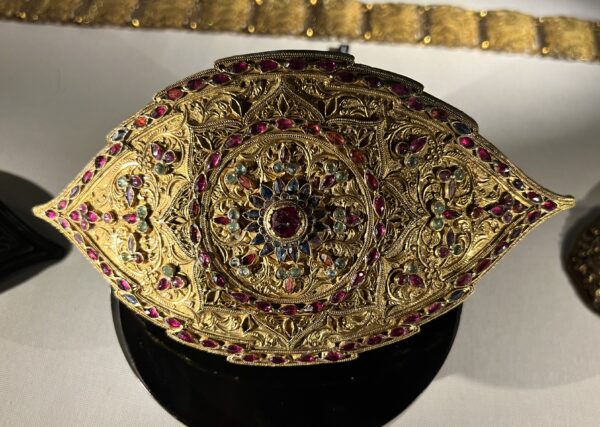
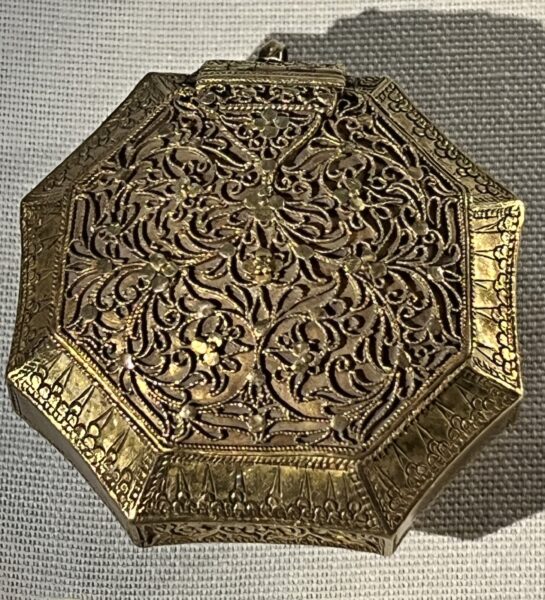
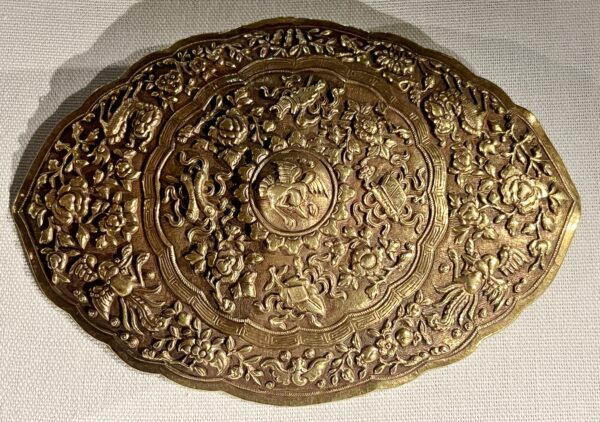
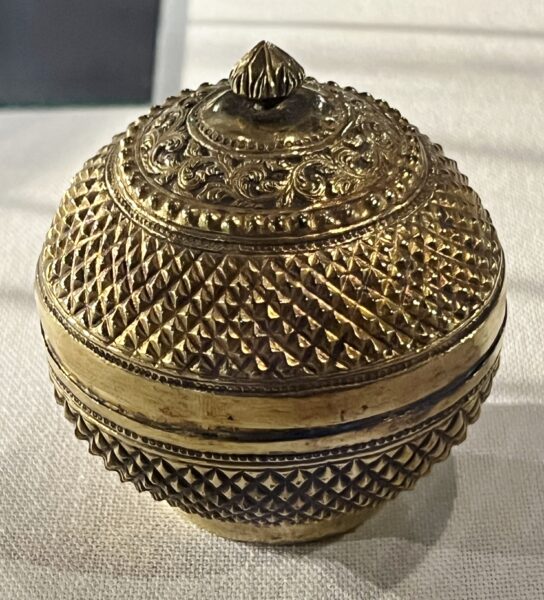
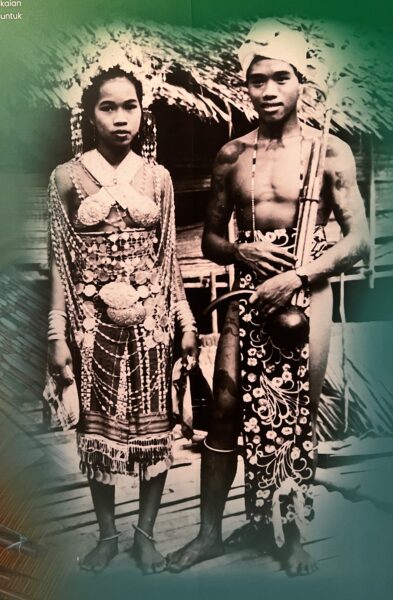
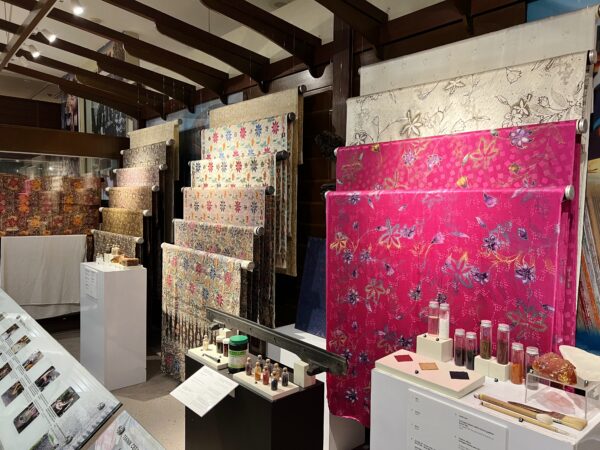
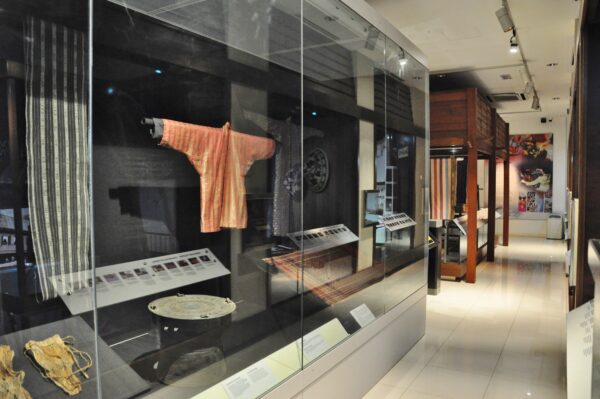
Receive our catalogues of new items by email.
See our entire Catalogue.
See our Video reels.
Listen to our Podcasts on collecting and other matters.

